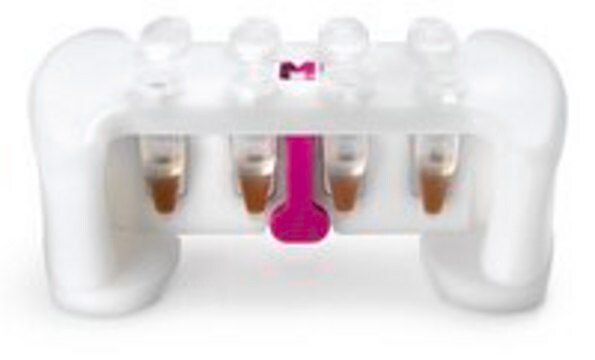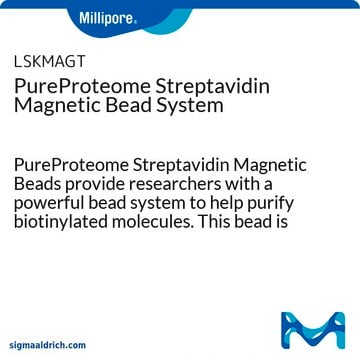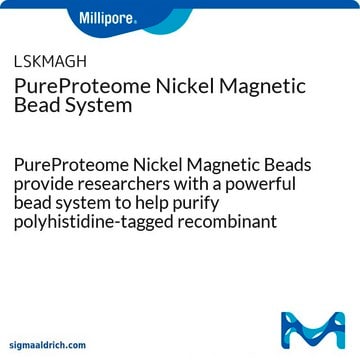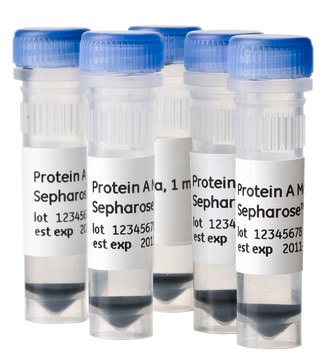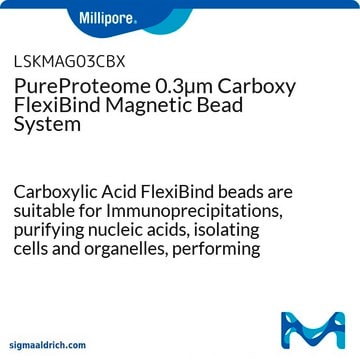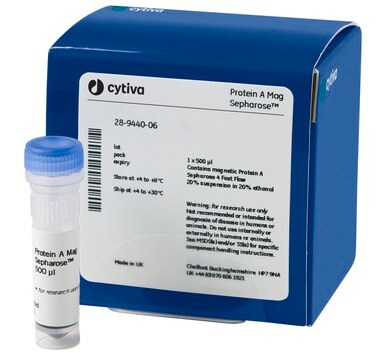LSKMAGA
PureProteome Protein A Magnetisches Beadsystem
The PureProteome Protein A Magnetic Bead System is a powerful system that helps researchers purify proteins by maximizing recovery and eliminating variability
Synonym(e):
Protein A Magnetic Beads
About This Item
Empfohlene Produkte
Qualitätsniveau
Verpackung
pkg of 2 × 1 mL
Hersteller/Markenname
PureProteome
Methode(n)
depletion: suitable (serum)
immunoprecipitation (IP): suitable
protein purification: suitable
Partikelgröße
10 μm
Kapazität
1.5-2.5 μg/μL, suspension binding capacity (rabbit IgG)
Versandbedingung
wet ice
Verwandte Kategorien
Allgemeine Beschreibung
Anwendung
- Serumabbau, Immunpräzipitation, Proteinaufreinigung und Zelllysate zur Analyse der gebundenen Proteine durch Western Blot
- Magnetische-Beads-Bindungsassays
- Immunpräzipitations-Zelllysat und Antikörper für ATPase-Aktivität
Rechtliche Hinweise
Haftungsausschluss
Lagerklassenschlüssel
12 - Non Combustible Liquids
WGK
nwg
Flammpunkt (°F)
Not applicable
Flammpunkt (°C)
Not applicable
Analysenzertifikate (COA)
Suchen Sie nach Analysenzertifikate (COA), indem Sie die Lot-/Chargennummer des Produkts eingeben. Lot- und Chargennummern sind auf dem Produktetikett hinter den Wörtern ‘Lot’ oder ‘Batch’ (Lot oder Charge) zu finden.
Besitzen Sie dieses Produkt bereits?
In der Dokumentenbibliothek finden Sie die Dokumentation zu den Produkten, die Sie kürzlich erworben haben.
Kunden haben sich ebenfalls angesehen
Artikel
The possible causes and potential remedies for challenges encountered in the immunoprecipitation-Western blot technique, which consists of cell lysis, formation of the antibody-antigen (immune) complex, precipitation of the immune complexes, and analysis by Western blotting.
PureProteome™ Protein A and G Magnetic beads provide a rapid and reproducible means to purify immunoglobulins (IgG) using the KingFisher Duo particle processor.
Unser Team von Wissenschaftlern verfügt über Erfahrung in allen Forschungsbereichen einschließlich Life Science, Materialwissenschaften, chemischer Synthese, Chromatographie, Analytik und vielen mehr..
Setzen Sie sich mit dem technischen Dienst in Verbindung.